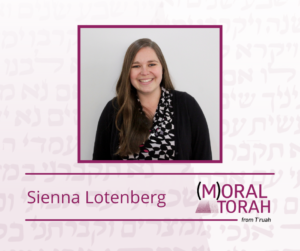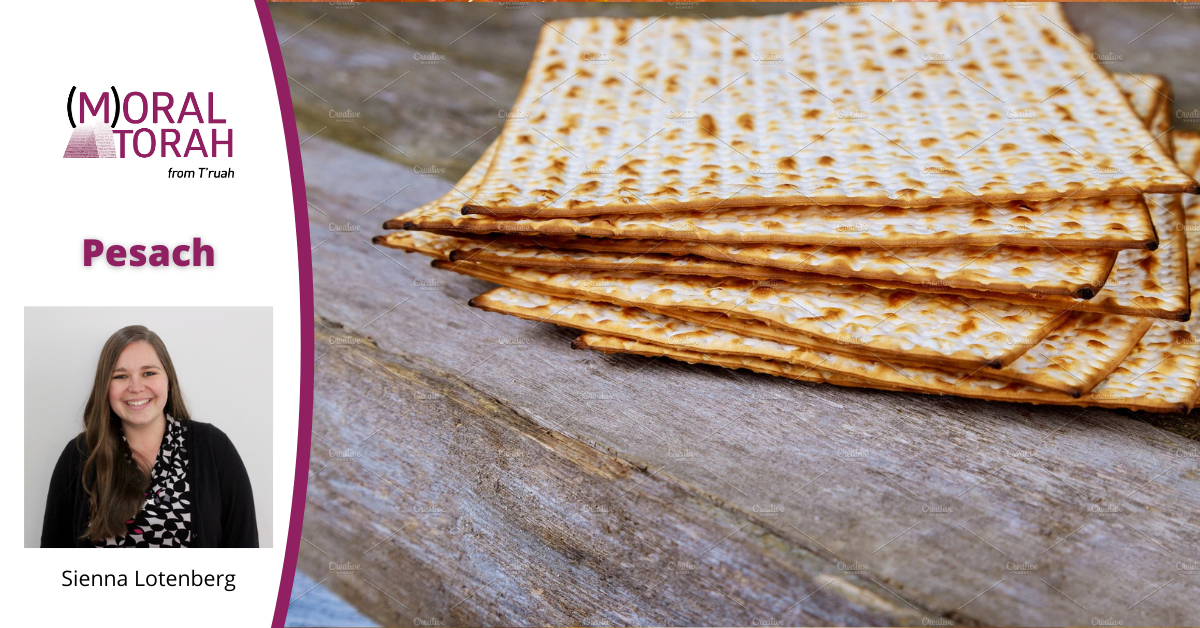A D’var Torah for Pesach by Sienna Lotenberg
To anyone who has recently become a sourdough baker: You are more prepared for Pesach this year than the rest of us. The ancient Egyptians discovered sourdough bread-baking about 6,000 years ago, and until recently, this was the only way to make the puffy loaves we call “bread.” For generations of Jews, Pesach meant losing a year-old starter. As sourdough bakers know, creating a new starter takes about a week – a long wait for a staple.
Dr. Yael Avrahami explains this practice as a privation ritual – we “mimic the practice of a bad year…ritually ensuring that…the coming year’s bread supply would be secure.” Controlled deprivation, then, as a prayer for abundance.
In the seder, we lift matzah and say, ha lachma anya di achalu av’hatana b’ar’ah d’Mitzrayim, “This is the bread of affliction that our ancestors ate in the land of Egypt.” Lachma anya, “bread of affliction,” literally means “poor bread,” which stands in contrast to “rich bread,” like challah.
In the Talmud (Pesachim 35a-b), the rabbis distinguish between lachma anya, the typical Pesach matzah, and matzah ashirah, or “rich matzah,” which is kneaded with wine, oil, or honey. They debate whether someone who partakes of matzah ashirah during Pesach is subject to divine punishment. All sides agree, though, that matzah ashirah does not fulfill the obligation of eating matzah – it’s not “poor” enough for a privation ritual.
Sign up to receive Moral Torah in your inbox each week.
A bread that resembles matzah ashirah does, however, appear in parshat Tzav, this week’s Torah portion: We read that matzah was a part of various ritual sacrifices, and that some of this matzah is to have oil mixed in (Leviticus 7:12). “Rich matzah” has a purpose, perhaps about showing our gratitude to God. The contrast between the unleavened bread of Temple ritual and the lachma anya of Pesach highlights the experience of deprivation, albeit in a controlled way. It is possible to make matzah that is much more delicious, but the poor, crunchy, cardboard-like matzah we eat poses a contrast to the sumptuous fare of our seder meals; controlled privation as we pray for a year of abundance.
You may be thinking: This year of all years we have no need for privation rituals. We have not only mimicked deprivation this past year but experienced it: lack of structure, lack of community, lack of childcare, lack of healthcare access. We’re not mimicking a public health crisis, we’re experiencing one, and far too many of us are mourning the losses it has wrought.
Most of us no longer regard Pesach as primarily an agricultural holiday, nor are we inclined to see privation rituals as efficacious. Our current reality, though, provides a stark example of how our temporary deprivation is bringing about an outcome we so deeply desire.
Find more commentaries on Parshat Tzav.
We all desperately want to see our friends and loved ones, and learn again what it is to grocery-shop without fear. Those of us who are waiting to receive vaccines eagerly await a sort of “liberation,” and even those who are already inoculated eagerly await the day when we can gather together in synagogues, theaters, weddings, potlucks, even funerals. Like puffy sourdough on the last day of Pesach, the future is so close we can almost taste it, and yet we’re still living lives of social and communal deprivation.
I wonder if, this year, the lachma anya, the matzah that represents deprivation, can help us bring some meaning to the wait.  While for many months our deprivation has been uncontrolled, now it is controlled, in that we can realistically hope and pray and plan for a future of abundance.
While for many months our deprivation has been uncontrolled, now it is controlled, in that we can realistically hope and pray and plan for a future of abundance.
After they spent the holiday of Pesach eating matzah, our ancestors had to spend another week waiting for a sourdough starter they could use to make the puffy loaves many of us spend all of Pesach craving. The starter of a better normal is around us, but it’s taking some time to ferment. This Pesach, I hope our matzah can allow us to remember and honor our suffering and loss, but also provide a symbol of hope for the future that is coming.
Sienna Lotenberg is a third-year rabbinical student at Hebrew Union College-Jewish Institute of Religion in New York and an alumna of the T’ruah Israel Fellowship.

